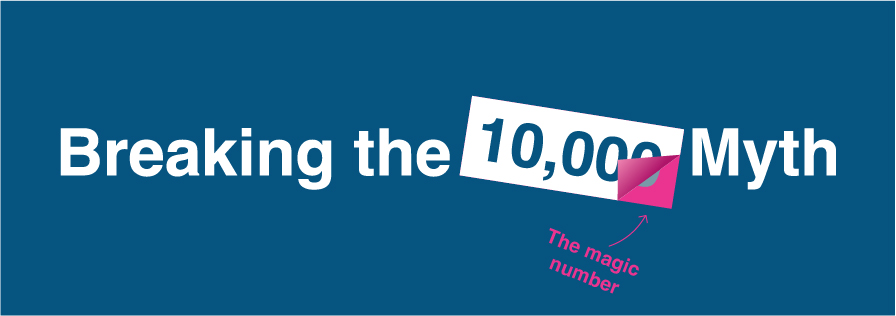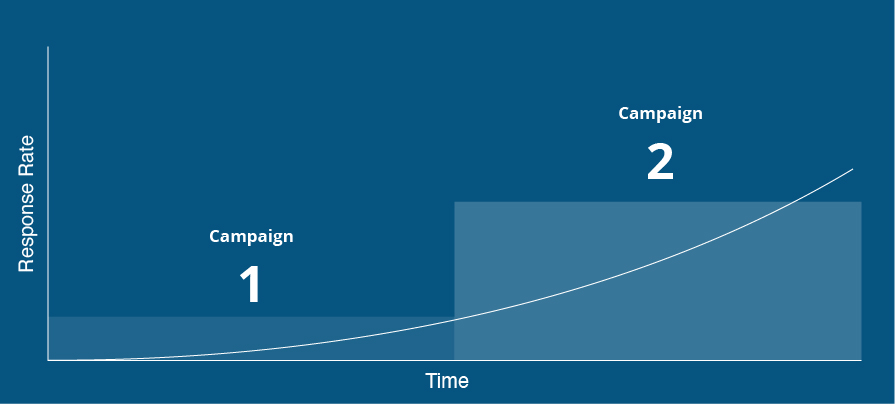How many leaflets should I distribute - and why the answer isn’t 10,000
0 minute read
Struggling to figure out the perfect number of leaflets for your campaign? Many businesses default to 10,000, seeing it as a safe, middle-ground option. But what if that seemingly logical choice is actually holding your marketing back? Most businesses we speak to start off the same way - unsure of the "right" number. This blog challenges the assumption to go for the round number and reveals why focusing solely on quantity might be limiting your reach and results, and how to approach leaflet distribution for maximum impact.
The "Goldilocks" Fallacy: Why 10,000 Isn't Always “Just Right”

Gravitating towards 10,000 leaflets is easy. It feels comfortable - not too big to break the bank, not too small to be ineffective. Many print providers even offer it as a standard package, reinforcing its perceived suitability. But as marketing expert Rory Sutherland points out in Alchemy, just because something is rational doesn't mean it's right.
If you have a reasonable marketing budget, limiting yourself to 10,000 homes could significantly restrict your reach and potential results. Conversely, if your target geographic area only encompasses 8,000 homes, printing 10,000 means wasted resources on areas you can't even serve. The "right" number depends entirely on your specific goals, audience, and geographical scope.
Beyond the Numbers: The Power of Multiple Touchpoints

All this aside, what if "how many" isn't even the most important question for your leaflet distribution strategy? Fixating on a single number often assumes one leaflet will be enough to convert. Yet, marketing advice dictates that a single exposure to an advert is easily forgotten.
Consider your favourite TV ads or radio jingles - their impact isn't just about content, but also frequency. You probably heard them multiple times, right? While leaflets are effective and can each deliver an average of 3 touchpoints (source: JICMail), this alone isn't always enough to defy the law of averages.
Immediate responders to your first leaflet are typically impulse buyers or those actively seeking your product/service. On average, this group won't exceed 3% of your audience. While 3% might seem like a decent ROI, remember this doesn’t equate to responses - only those most likely to respond on first sight of your leaflet. The average response rate from a distribution is 0.6%, which includes non-purchase actions like website visits or word-of-mouth discussions, not just new customers. So, instead of asking "what's the right number of leaflets?", perhaps we should be asking, "what’s the right number of times?”. The more times you market to the same audience, the more memorable you become. Multiple touchpoints will have a greater impact on the remaining 97% of your audience, by prompting those who procrastinated in the first instance to take action. For more, check our insights on the drip effect marketing strategy.
Conclusion
Navigating leaflet distribution can feel complex, especially if you're new to the channel. Many businesses struggle with questions like leaflet size, quantity to distribute, and expected response rates. The good news is leaflet distribution consistently outperforms many other marketing channels for brand awareness, attention metrics, and ROI. It's a proven, tangible method for reaching a broad audience effectively.
At Mr Flyer, we understand these challenges. We don't just offer print and flyer distribution services; we offer expert advice, precise house counts for your target areas, and work collaboratively to find a solution that fits your budget and goals. We're dedicated to Delivering Better results by helping you understand not just how many leaflets to send, but how to create a truly resonating campaign.
Get in Touch
If you’re unsure how many leaflets to go for, or would like help with planning your next campaign, get in touch today.
Are you curious why leaflet distribution works so well? Read our blog on perception vs. reality.
